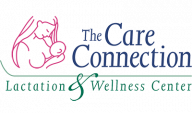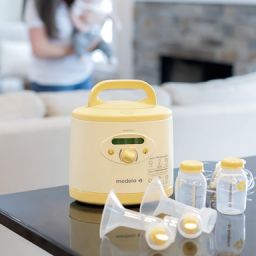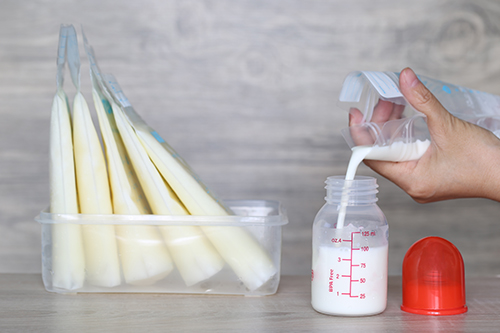There are many different reasons as to when and why a baby receives their first bottle. Although it is recommended to wait until at least 3-4 weeks of age to introduce a bottle, sometimes circumstances arise where a baby needs to be given mother’s milk away from the breast.
When a baby is unable to breastfeed
Examples of such situations could include a baby that is not able to latch or has an inefficient suck. If you have had a premature baby, this can often be the case. Sometimes mom and baby are separated due to medical complications. If your baby is unable to feed directly at the breast, the next best option would be to provide expressed breast milk.
If you are working with an IBCLE (International Board Certified Lactation Consultant), they will most likely recommend giving the baby milk via a cup, spoon, syringe, or supplemental nursing system first before offering a bottle in the early days.
Introducing a bottle to a breastfed baby
Whenever a young breastfed baby receives a bottle, we always want to introduce it in a way that they will not prefer it over the breast. One way we can make bottle-feeding more like breastfeeding is to slow down the flow of the milk.
There are a few different ways to accomplish this:
- Choose a bottle nipple that has a wide base and is labeled slow flow.
- Hold your baby nearly upright, helping to keep your baby’s tongue down and forward, which is more like breastfeeding.
- Focus on holding the bottle horizontally. When the bottle is not in a vertical position your baby must work harder for the milk to flow. This is similar to being at the breast, where your baby controls the flow.
- Milk should just be covering the tip of the nipple, preventing excess swallowing of air. If the milk fills the entire nipple it will increase the flow of milk which is what we want to avoid.
- When beginning the bottle-feeding session, tap your baby’s bottom lip with the bottle nipple and wait for them to open wide (as if they were yawning).
- Once the bottle nipple is in your baby’s mouth, make sure they maintain a good latch with their lips flanged out. You may have to manually pull their lips out if they have not done so on their own.
- Make sure milk is maintained in just the tip of the nipple throughout the feed and adjust the angle of the bottle as needed. When your baby wants to take breaks, allow them to do so.
- When your baby is giving you signs they are finished eating, do not force them to finish the bottle.
- The feeding should take a total of about 15-20 minutes.
- Any milk left in the bottle after 1 hour should be discarded.
By practicing this method of bottle feeding, we can also avoid overfeeding a breastfed baby, which in turn can lead to gastrointestinal issues or a baby not eager to nurse at the breast.
If you are returning to work and introducing a bottle to your baby, it is also important that you review this method of feeding with your childcare provider.
We’re here to help
If you have any questions about paced bottle feeding or if you have concerns about giving your newborn a bottle, please call The Care Connection Team at 716-725-6370 to further discuss with one of our IBCLCs.









